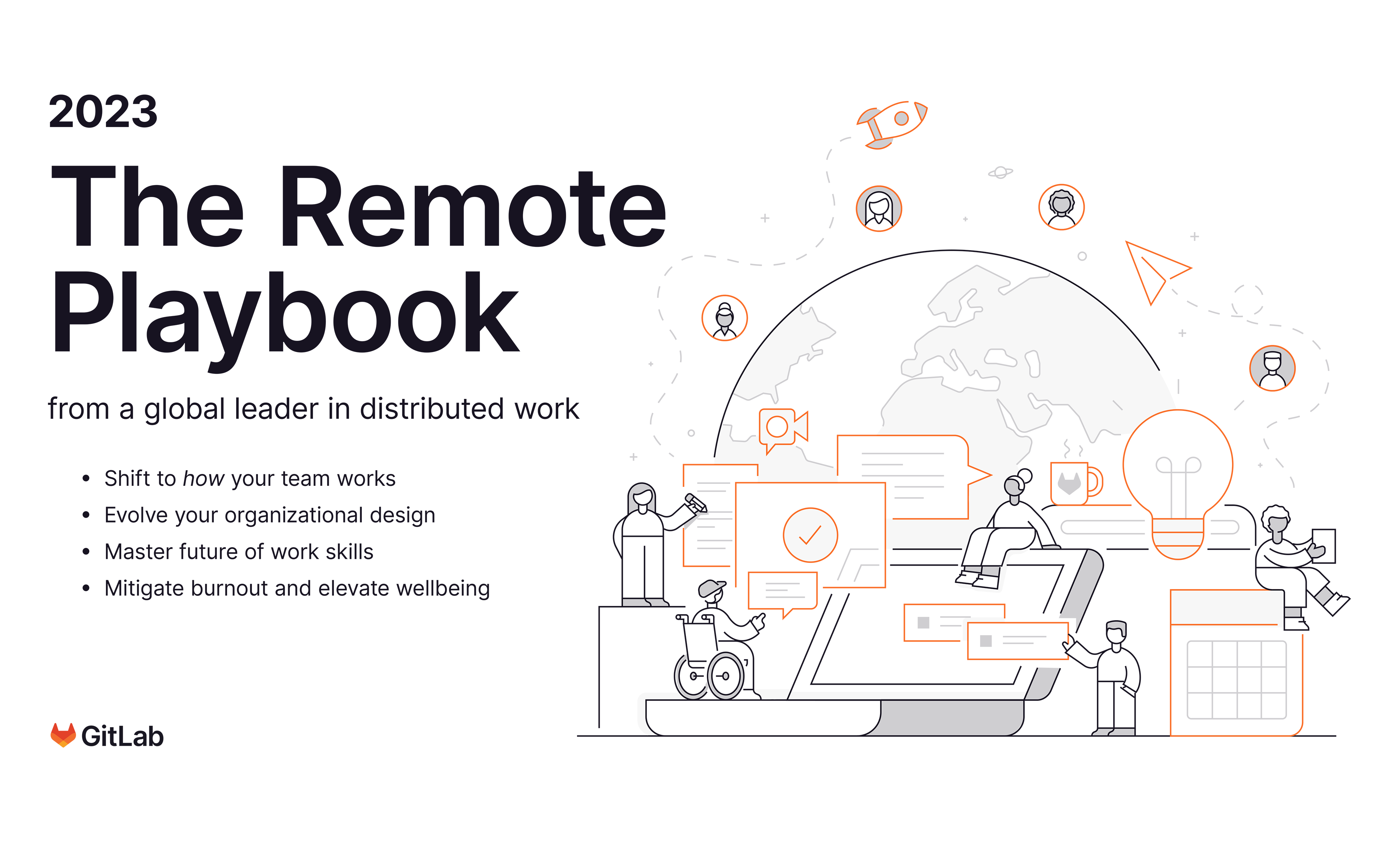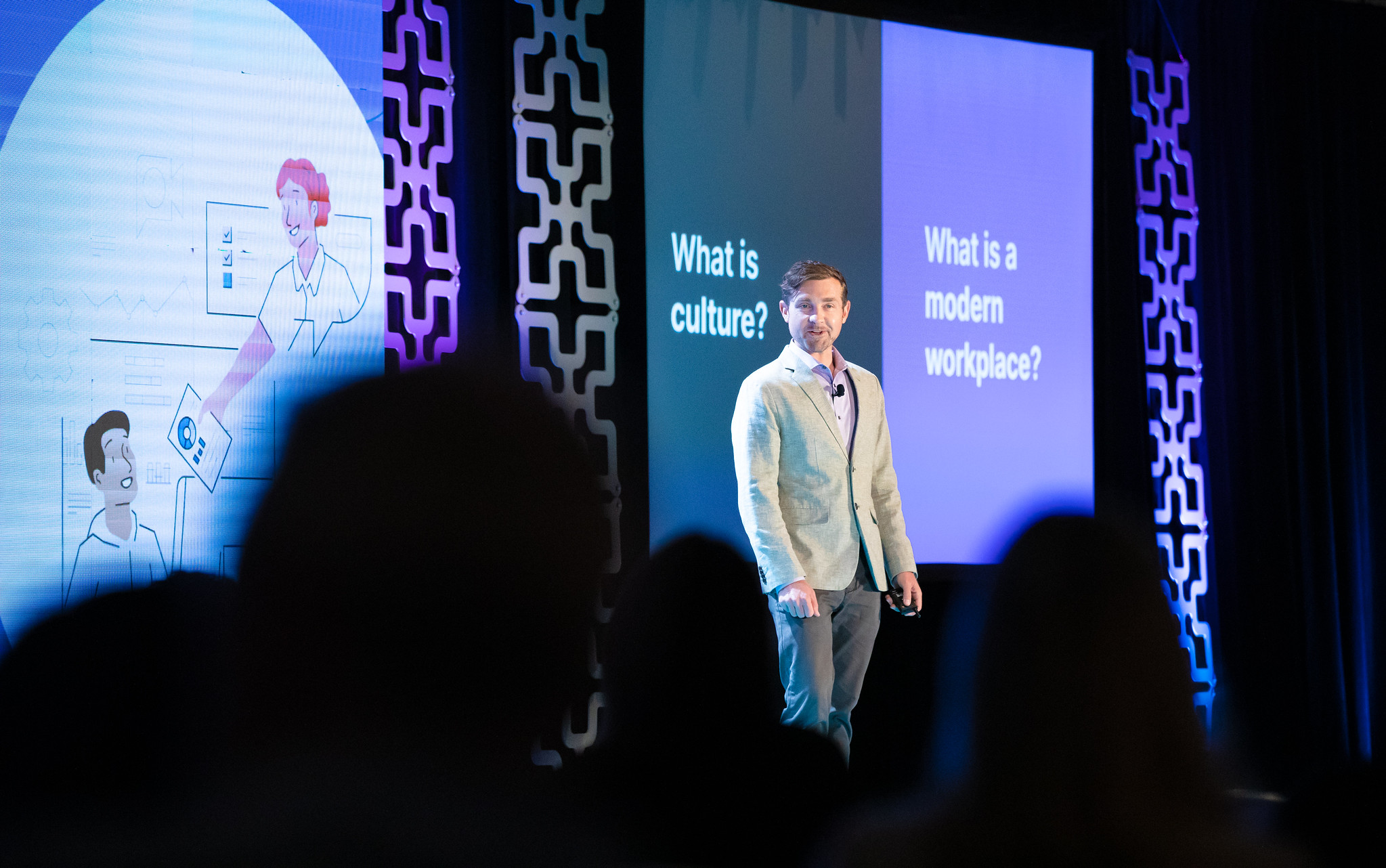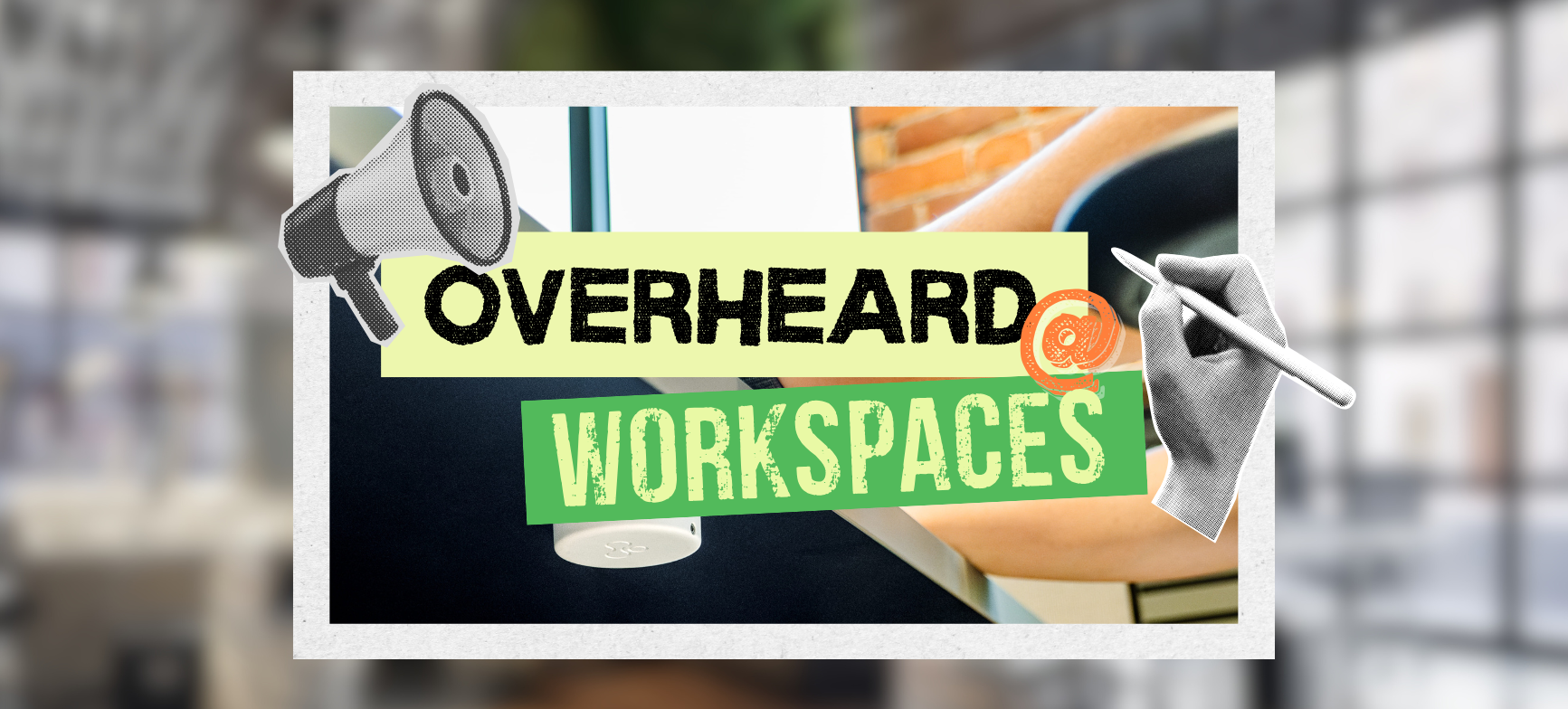In 2021, DevOps provider GitLab became the first fully remote company to go public. With roughly 1,700 employees spread across 60 countries, it’s one of the most geographically diverse companies in the world — without a single company office space.
Instead, GitLab’s employees have the freedom to work from the spaces of their choosing — whether home offices or co-working spaces – and within schedules of their own design. This flexible work style is at the heart of GitLab’s effort to reimagine the modern workplace, with the goal of creating a strong culture that allows its employees to do their best work while living their best lives.
"The future of work is not a fate or inevitability, but it's something that we all have the opportunity to actively build," said Darren Murph, GitLab's former Head of Remote, in a talk at WorkSpaces ‘22 in Palm Springs. Now Vice President of Workplace Design and Remote Experience at Andela, Murph offered his thoughts on what it takes to build that future.
Understanding What Makes Culture Work
To build a strong culture in a remote workforce, a shared understanding of what “culture” means is essential. At GitLab, culture is defined as the sum of three discrete elements: its operating principles and values; camaraderie, or the pursuit of mutual trust and understanding among workers; and work style, as laid out in the company’s communication guide.
“Culture works when values create behaviors,” Murph said, arguing that distributed workplaces need to take a deliberate approach to codifying behaviors out of their values. GitLab, for instance, has six core values: Collaboration; Results; Efficiency; Diversity, Inclusion & Belonging; Iteration; and Transparency. Since broad umbrella terms don’t exactly lend themselves to singular interpretations, GitLab treats its values as a living document, each one unpacked in extensive detail and collaboratively updated over time.
“We don't stop at these six values," Murph explained. "You'll find thousands of words underneath them that codify and create behaviors from these values.” One small example: “Under Collaboration, we have an operating principle called short toes," he said. "This means that anyone in the organization can contribute their thoughts and input to anyone else's function. The person on the receiving end is expected to collaborate with short toes. If someone has their toes stepped on, they're not collaborating up to GitLab standards.”
Defining the Modern Workplace
A common understanding of culture is one side of the coin. The other is a common understanding of what workplace even means anymore. As Murph observed, the modern workplace is deprioritizing physical proximity to one’s team, proximity to major urban areas, the conventional linear workday, office politics, and presenteeism. At the same time, it’s placing an increased emphasis on flexibility to work wherever and whenever, finding fulfillment in non-work communities and connections, and managers and teams who value results over everything else (for instance, presenteeism and office politics).
In other words, the modern workplace acknowledges and respects the independence of the worker. The freedom to work remotely is one major part of this, but so is the freedom to work according to one’s own schedule. A recent Pulse survey by Future Forum found that whereas 79% of respondents said they want more flexibility in where they work, a whopping 94% said they want more flexibility in when they work.
"Location independence is the current frontier of modern work, but time independence is the next frontier of modern work," Murph said. "There's a lot of operational unlearning and redoing and recreation that is necessary to truly enable this, but imagine what can happen if you satisfy 94% of what employees are looking for."
The TeamOps Framework
How did these new workplace norms arise? In short, Murph argued, the pandemic facilitated a transfer of institutional power that forced people to reevaluate their identity stacks (a term coined by Polygon’s Tyler Sellhorn). In the old paradigm, work dominated people’s identity stacks. Now, work is only one layer out of many.
“I'm a son, I'm a husband, I'm a father, I'm a man of faith. I'm a traveler, I'm a musician, and I'm also an operator at GitLab," Murph explained. "As leaders, we have to design the modern workplace to recognize that this is a reality, and to give people more opportunity to exercise all of those other layers of the stack so that they are most fulfilled and productive in the workplace portion.”
To accommodate this new reality, employers must shift their focus from where work happens to how it happens. This is the goal of TeamOps, the framework GitLab developed to help workplace leaders fully embrace the new normal. As Murph outlines in GitLab’s guide The Remote Playbook, TeamOps has four guiding principles:
Aligning teams on a shared reality. In a world where asynchronous work is the norm, Person A can no longer walk down the hall to get whatever information they need from Person B. Instead of systems based on knowledge transfer, then, workplaces need systems based on knowledge retrieval. In this paradigm, Person A and Person B can both “tap into a system of shared knowledge” to get what they need, whenever they need it, without commandeering the other’s time.
A notion that everyone contributes. Echoing GitLab’s “shared toes” philosophy, the TeamOps framework argues that everyone should be able to consume and contribute knowledge in the organization, regardless of their location or title. "We have to create systems where everyone can contribute ideas and feedback in the same size font: a more inclusive way of contributing so that the best idea wins, not the loudest voice in the room,” Murph said.
Decision velocity. “I believe that the faster an organization can make decisions, the faster that they'll win," Murph said. The challenge for organizations, then, is building the infrastructure necessary to increase their decision velocity as much as possible. "How fast can you enable people to make great, informed decisions in your organization, no matter what their workspace is or where they are in the world?”
Measurement clarity. A distributed workplace requires new management tactics. Organizations need to create systems that value outputs rather than inputs to make better, faster, and more informed decisions. Or, as Murph put it: "It's time to say goodbye to managing by walking around for too long.”
Recreation, Recognition, and Rejuvenation
As he wrapped up his session, Murph suggested that building a strong culture in a remote workplace requires three “Re”s: recreation, recognition, and rejuvenation. To recreate their cultures, companies have to recognize the massive changes in their workers’ identity stacks; then, they have to design spaces that rejuvenate their workforces when they come together, giving them the sense of purpose and value they need to live their best lives in their own communities.
"It's time to realize that the past is not going to get us into the future," he concluded. "There's opportunity in tapping into what drives people now and building organizations that will empower them to do their best work and live their most fulfilling lives."

Posted by
Join us at WorkSpaces!
The retreat for corporate real estate and workplace innovators.
Oct 4-6, 2026 | Santa Barbara, CA




-3.png)
-3.png)


-2.png)

Comments